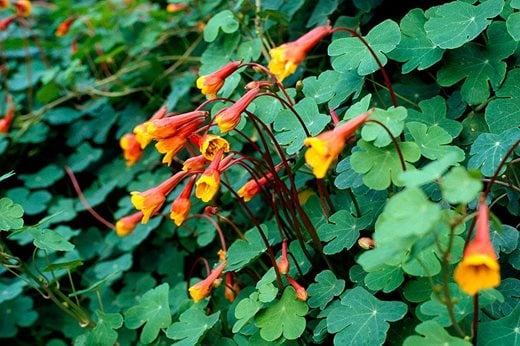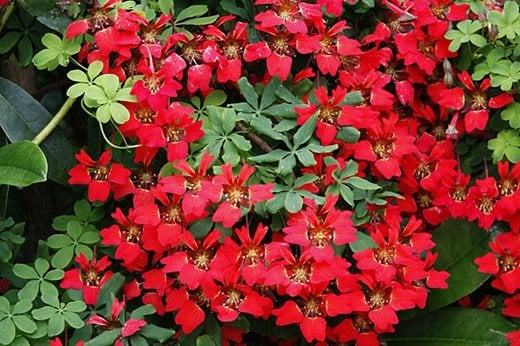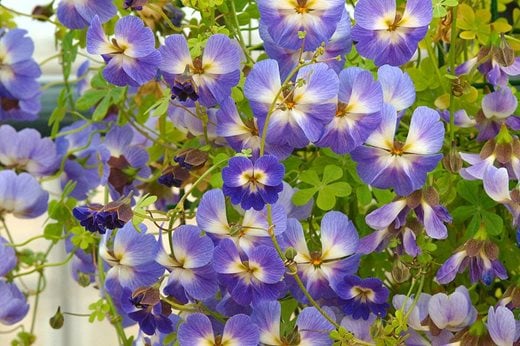If you thought nasturtiums were just a plant for children (and blackfly), think again. Plantsman Graham Rice presents a selection of perennial nasturtiums that will be sure to change perceptions
We all know nasturtiums. Easy annuals with seeds so big that even kids can sow them easily. They germinate quickly, grow quickly too, and the flamboyant flowers are large and colourful. But while the familiar nasturtium (Tropaeolum majus) is an annual, it can also be grown from cuttings. So for the fully double types, such as the 19th century orange-red ‘Hermine Grashoff’ and the Chelsea Plant of The Year runner-up ‘Fruit Salad’ (sadly, not available at present), treating them as half hardy perennials and growing them from cuttings is the only way to propagate them.
 Good enough to eat
Good enough to eat
A genuine perennial, though a half-hardy one, is the climbing T. tuberosum which produces fat knobbly tubers, rather like those of a Jerusalem artichoke, and is grown for food in South America where it’s known as mashua. Its tubular red and yellow flowers are brightly colourful but often come too late to give a good show; ‘Ken Aslet’ (see photo) is an earlier flowering form which also features bluish foliage and which grows well in Britain on a sunny wall. Lift the tubers after the first light frost and store them frost free.
 Fire in the shadows
Fire in the shadows
There are also some genuinely hardy perennials in this impressively varied genus. For raised beds and gravel gardens, the gently sprawling T. polyphyllum with deep yellow flowers set against silvery grey leaves can be stunning – while for shadier sites, twining through rhododendrons or up a yew hedge, brilliant scarlet flowers give T. speciosum (see photo) the common name of 'flame flower'.
 Surprising shades
Surprising shades
Two more species are different again, both relatively delicate-looking climbers and both starting into growth in autumn, then flowering from spring before dying down and remaining dormant in summer. The small tubers carry them through the hot, dry summer of their native Chilean mountains. Both are best grown in pots in a frost free, but not warm, greenhouse.
The sky blue flowers of T. azureum (see photo), with their creamy centres, are a real surprise after the fiery shades of other species and the 60-90cm (2-3ft) plants are ideal among pot-grown alpines. The astonishing scarlet, blue and yellow flowers of T. tricolor look a little like a shoal of guppies and open over a long season from winter almost to summer. Both these can be tricky to keep going but are worth the effort; let them dry out in summer.

